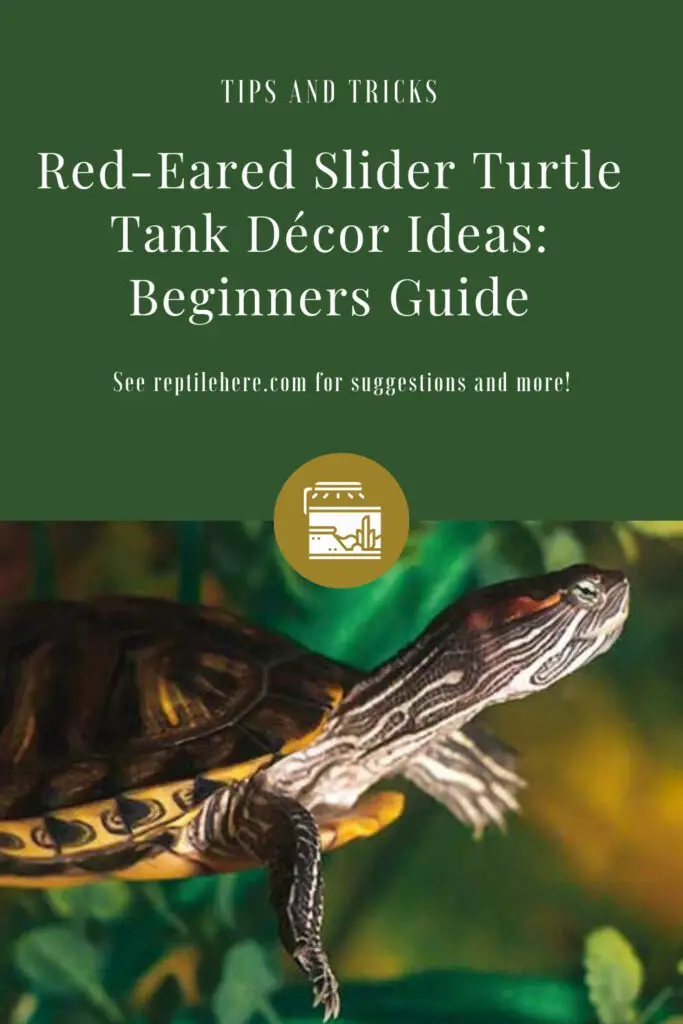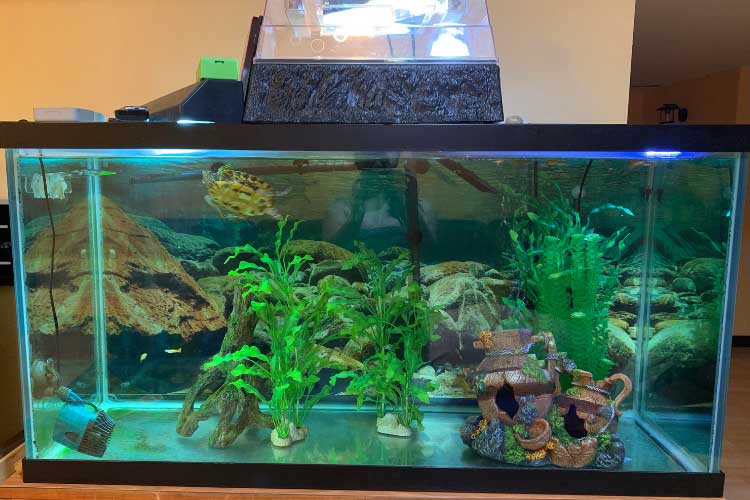Red-Eared Slider Turtle Tank Décor Ideas: Beginners Guide
When designing your red-eared slider turtle tank, you want it to be a healthy living environment for your pet but at the same time aesthetically pleasing. So, how do you decorate your turtle tank? This guide will help you out.
The best red-eared turtle tank décor ideas include lining the bottom with substrate, adding larger rocks and stones, using driftwood, creating hiding spots, and introducing live aquatic plants.
In this article, we’ve discussed more details about various red-eared slider tank décor ideas to help beautify your red-eared slider turtle tank setup.
Red-Eared Slider Turtle Tank Décor Ideas
Contents
You can decorate your red-eared slider by using various red-eared slider turtles tank decoration accessories such as substrate, rocks, stone, wood., hiding spots, and aquatic plants.
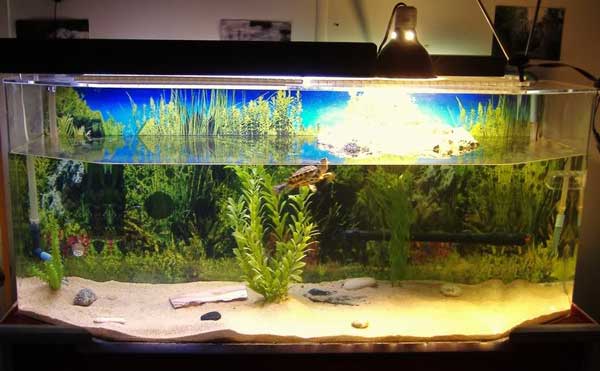
These decorations help enrich your turtle’s living environment—keeping your turtle from getting bored. They also help stimulate your turtle both physically and mentally by providing it with something to smell, hide under, climb, or interact with.
In other words, a well-decorated red-eared slider tank will keep your turtle happier and healthier compared to a minimalistic tank setup.
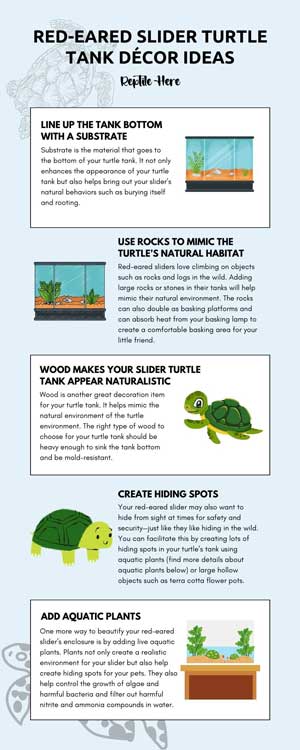
Below is our full list of the décor ideas to help you enrich your pet’s enclosure and make it more eye-pleasing:
Line up the tank bottom with a substrate
Substrate is the material that goes to the bottom of your turtle tank. It not only enhances the appearance of your turtle tank but also helps bring out your slider’s natural behaviors such as burying itself and rooting.
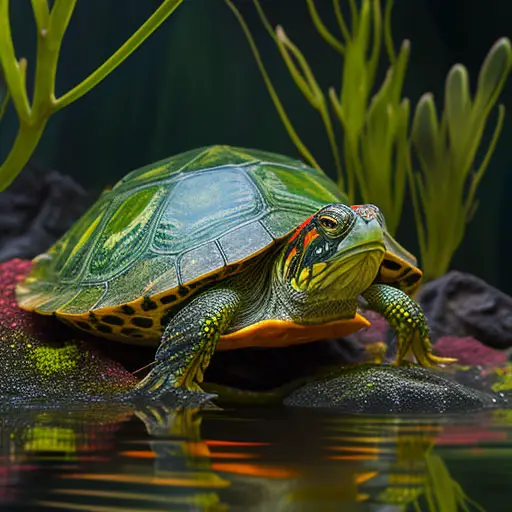
That said, you should choose a substrate that won’t make your water dirty or cause issues for your pet if ingested. We recommend choosing sand as it’s similar to the clay sand in your slider’s natural habitat.
Avoid using small rocks or pebbles for substrate as your turtle may try eating them. Putting at least 2-inch of substrate in your turtle enclosure is enough to create a nice-looking environment for your turtle.
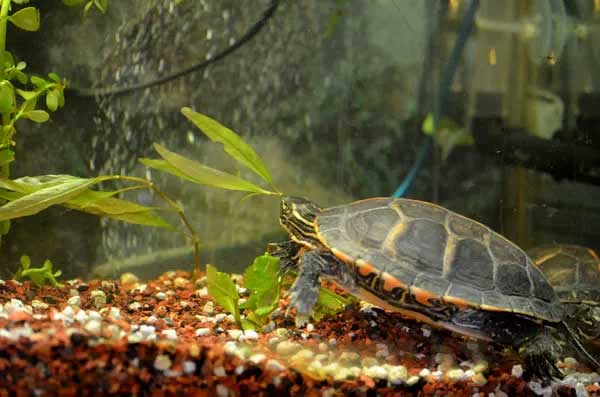
Use rocks to mimic the turtle’s natural habitat
Red-eared sliders love climbing on objects such as rocks and logs in the wild. Adding large rocks or stones in their tanks will help mimic their natural environment.
The rocks can also double as basking platforms and can absorb heat from your basking lamp to create a comfortable basking area for your little friend.
You should, however, stay away from rocks with sharp edges which can easily damage your turtle’s shell.
If you choose to stack the rocks together in the aquarium, you should use heavy and large rocks so they don’t shift or collapse easily.

You may also want to anchor them to the bottom of your turtle tank using waterproof grout or 100% silicone sealant.
If you decide to collect your own rocks, be sure to give them a thorough cleaning using soap and putting them in boiling water to disinfect them.
You should also check if the rocks are safe for your turtle tank by pouring a few drops of vinegar on them. If fizzing occurs, then the rocks are likely to alter your water pH and you’d want to avoid using it.
Wood makes your slider turtle tank appear naturalistic
Wood is another great decoration item for your turtle tank. It helps mimic the natural environment of the turtle environment. Plus, bigger wood pieces can double as basking platforms.
The right type of wood to choose for your turtle tank should be heavy enough to sink the tank bottom and be mold-resistant. You should avoid any treated or natural wood that may change the color of your water.
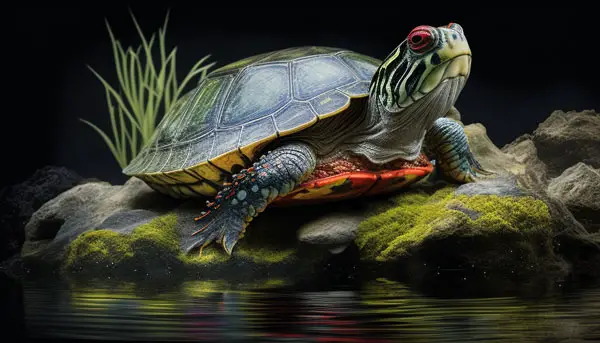
Stay off woods that are poisonous for your turtle’s health including grapevine and pine/conifer.
Most red-eared slider owners are especially fond of driftwood for their turtle tanks. This makes sense because turtles love swimming and climbing on logs in the wild.
Moreover, driftwood gives your tank house a more realistic and natural look.
That said, we advise you to use wood from the pet store as it is parasite-free and won’t bring any harm to your pet slider.
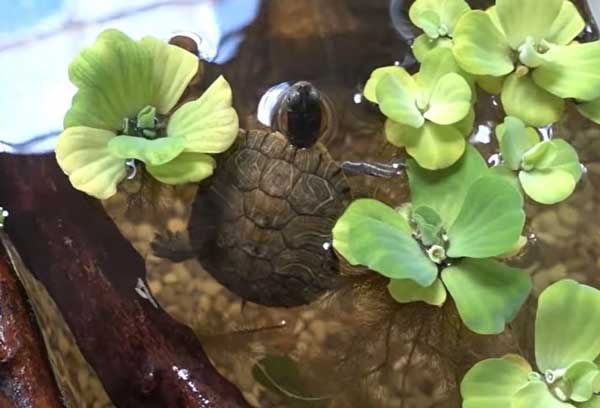
If you use your own driftwood from out there, be sure to thoroughly wash and disinfect it using boiling water to kill any insects or parasites that may harm your beloved slider turtle.
Create hiding spots
Your red-eared slider may also want to hide from sight at times for safety and security—just like they like hiding in the wild.
You can facilitate this by creating lots of hiding spots in your turtle’s tank using aquatic plants (find more details about aquatic plants below) or large hollow objects such as terra cotta flower pots.
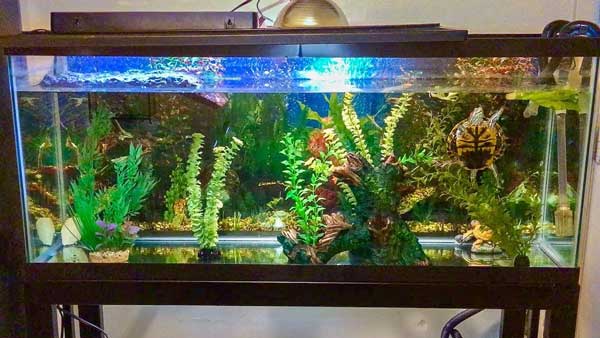
Just make sure the hiding spots you create have adequate space for your turtle to easily get in, safely turn around, and even come back out.
Avoid using any items with glazes or finishes for hideaways as they can hurt your turtle.
Add aquatic plants
One more way to beautify your red-eared slider’s enclosure is by adding live aquatic plants.
Plants not only create a realistic environment for your slider but also help create hiding spots for your pets.
They also help control the growth of algae and harmful bacteria and filter out harmful nitrite and ammonia compounds in water. In simpler words, aquatic plants can help keep water quality high.
However, keep in mind that these plants may end up being uprooted, shredded, or even eaten by your bored or hungry pet turtles.
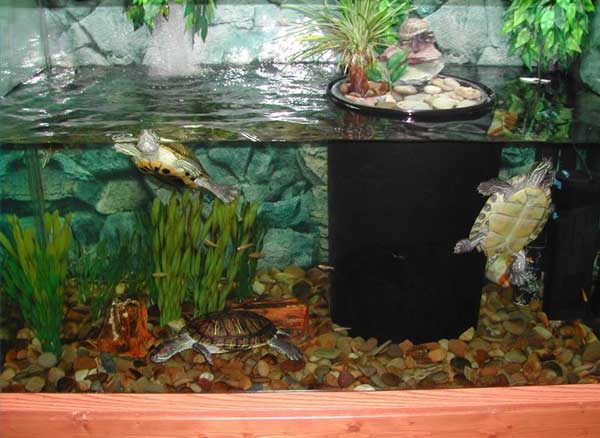
Make sure you only choose turtle-safe aquatic plants that won’t harm your turtle if it eats them.
Some of the best plants to consider include Amazon sword, duckweed, Frogbit, hornwort, pondweed, java fern, java moss, water hyacinth, water fern, waterweed (Anacharis), and others.
Avoid plants such as dumb cane, luck bamboo, elephant ears, arrow arum, etc.
We also advise against using artificial plants as your turtle may easily mistake them for live plants and eat them, risking serious digestive issues.
Final Verdict
Decorating your red-eared slider turtle makes it more eye-pleasing and at the same time provides your slider pet with an enriched environment to keep away boredom. Some of the best turtle-friendly decoration ideas to consider for your red-eared slider tank include substrate, live aquatic plants, larger rocks, wood, and hiding spots. Follow our tips in the above guide on how to use various décor items to beautify your turtle tank.
